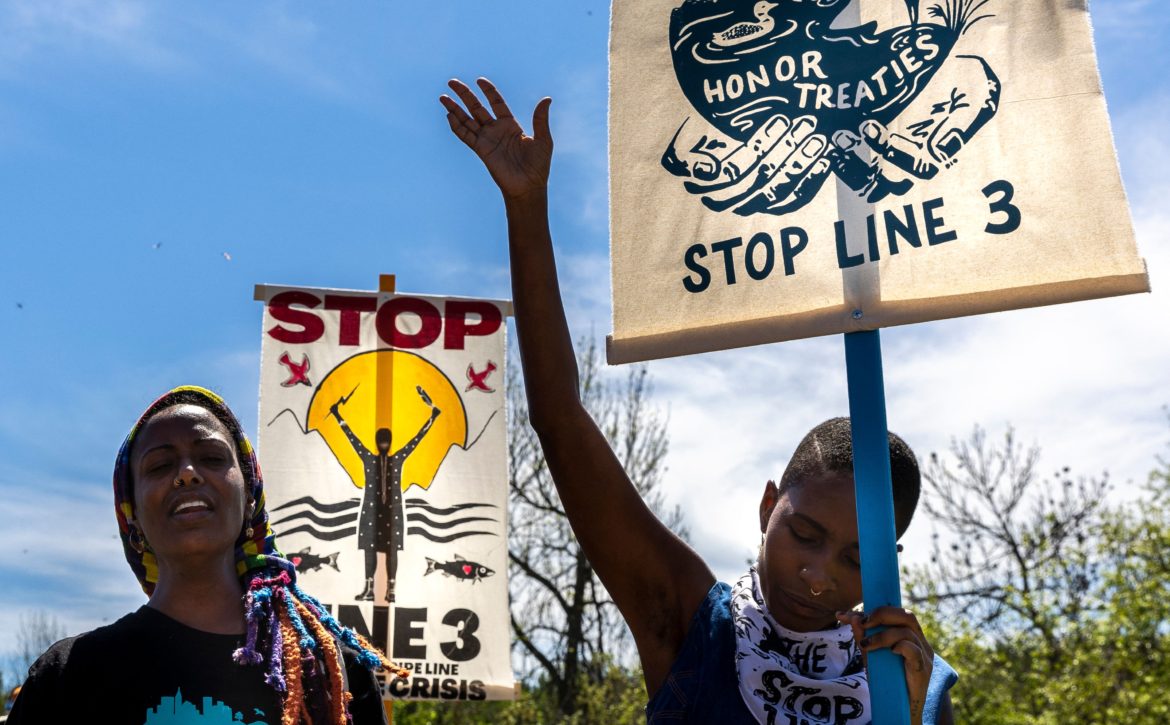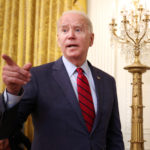
The Biden Administration Defends Yet Another Oil Pipeline
Barack Obama’s “all of the above” energy strategy is alive and well under his former vice president. In a legal brief on Wednesday, President Biden’s Justice Department defended a pipeline permit approval process that was originally rushed through under the Trump administration. Supporting the Army Corps of Engineers’ environmental assessments last year for Line 3, which would cut through Minnesota watersheds, the DOJ’s attorneys argued that the Corps had sufficiently considered the impact on “wetlands, the climate, low-income and minority populations, Tribal rights to hunt, fish, and gather, and all of the issues to which Plaintiffs draw special attention.”The brief is the Biden administration’s second defense of a fossil fuel infrastructure project in recent months. In April, the Army Corps of Engineers declined to weigh in on the legality of the Dakota Access pipeline’s permits amid a lawsuit brought by three affected tribal nations. The DOJ attorney’s defense of the Corps’ inaction forced the court to allow the pipeline’s continued operation even though it lacks a valid environmental assessment. The Line 3 brief is thus another frustrating move by an administration that purportedly wants its climate initiatives—specifically, the drastic reduction of U.S. emission rates over the next three decades—to be a defining part of its legacy. With one-eighth of Biden’s term already in the rearview, his pipeline strategy is looking less like a series of frustrating but calculated concessions and more like a clear signal of how he wants to slow-roll the country’s necessary transition to clean energy.Line 3 is not a new pipeline; rather, it aims to replace a pipeline that has been around since the 1960s. Enbridge Energy, the Canadian company behind Line 3, went to the Obama administration in 2014 and the Minnesota government and applied for permits to replace the existing, dated infrastructure. But the new Line 3 pipeline would not be a like-for-like replacement; it would take a different route instead. Enbridge still wanted to transport the Alberta-based oil to Superior, Wisconsin, but it saw an opportunity to cash in on a new pipeline path without going through the full permitting process. Enbridge also wanted to increase the carrying capacity of its Alberta Clipper pipeline, a separate project, but did not want to go through the permitting process necessary to clear any new pipelines that cross the Canada-U.S. border. This graphic from the Twin Cities Pioneer Press shows how blatant the new Line 3 workaround would be.Enbridge ended up getting the best of both worlds, as the Trump administration approved the Clipper permit in 2017 and gave the green light to the new Line 3 route in 2020. The Line 3 approval granted by the Army Corps of Engineers in November was challenged in court by the two affected tribal nations, the Red Lake Band of Chippewa Indians and the White Earth Band of Ojibwe, and two environmental organizations, the Sierra Club and Honor the Earth. Tribal nations oppose it, and are calling for a full-throated environmental impact study, because the pipeline is a threat to their freshwater sources. The steel pipes are being buried four feet underground and are slated to cut through 200 bodies of water, including the Mississippi River. In an article on the pipeline’s looming threat to the Anishinaabe’s longtime cultivation of wild rice, Grist found that Enbridge pipelines caused 291 crude oil spills between 2002 and 2018, including in the old version of Line 3, which, in 1991, poured 1.7 million gallons into a (luckily frozen) Mississippi River tributary—the largest inland oil spill in U.S. history.That Biden’s Justice Department would co-sign the Trump administration’s permit is even more galling given the scale of the concurrent climate crises facing the country today, as well the Interior Department’s commitment under Secretary Deb Haaland to fix the federal government’s broken tribal consultation process. As The New York Times reported, Biden still has the executive power to rescind the permits and effectively shutter the pipeline, as he did with the Keystone XL project. Wednesday’s brief instead suggests that the White House will mimic the Obama administration’s strategy on Dakota Access: ignore tribal nations, approve and defend pipelines, and hope the resulting protests and legal challenges don’t create too much blowback. It’s a disappointing decision from an administration that has promised to listen to Indian Country, but it’s getting difficult to act surprised.
Read More

